Extraordinary discovery in England: the first mosaic with an episode from the Iliad
It is an extraordinary discovery that has taken place in a field in the East Midlands in England: and this time the adjective “extraordinary” can be used in earnest, because nothing like it had ever been found before in Britain. In fact, archaeologists from Archaeological Services at theUniversity of Leicester have discovered a rare Roman mosaic featuring an episode from Homer ’s Iliad following an excavation conducted in the countryside in Rutland County. The mosaic was immediately declared a “scheduled monument,” or property of cultural interest, by the Department for Digital, Culture, Media and Sport (the counterpart of our Ministry of Culture), at the suggestion of Historic England, a government institute that has jurisdiction over heritage and the protection of ancient monuments, with some tasks similar to those of our superintendencies.
It was Historic England itself that broke the news of the find yesterday, although the initial discovery of the mosaic dates back to 2020, thanks to Jim Irvine, son of landowner Brian Naylor, who noticed the remains in one of his fields and contacted the archaeological team at Leicestershire County Council, the local authority’s heritage consultants, to report what had been found. Given the “exceptional” (as defined by experts) nature of this discovery, Historic England was able to secure funding for urgent archaeological investigations of the site from the University of Leicester in August 2020. Further excavations involving staff and students from the School of Archaeology and Ancient History at the University of Leicester examined the site more thoroughly in September 2021.
The mosaic remains measure 11 meters by nearly 7 meters and depict part of Achilles’ story, namely his confrontation with Hector at the end of the Trojan War. It is a depiction of which few examples survive in Europe, and it is the only one known in the United Kingdom. The work forms the floor of what archaeologists think was a large dining room or an area where the owners of the mansion relaxed. In fact, the room where the mosaic was located is part of a large villa that was inhabited in late imperial times, between the third and fourth centuries AD. The villa is also surrounded by a series of other buildings revealed by geophysical survey and archaeological study, including what appear to be barns, circular structures, and perhaps even a bathhouse, all within a series of boundary ditches. It is likely that the complex was owned by a wealthy individual who had knowledge of classical literature.
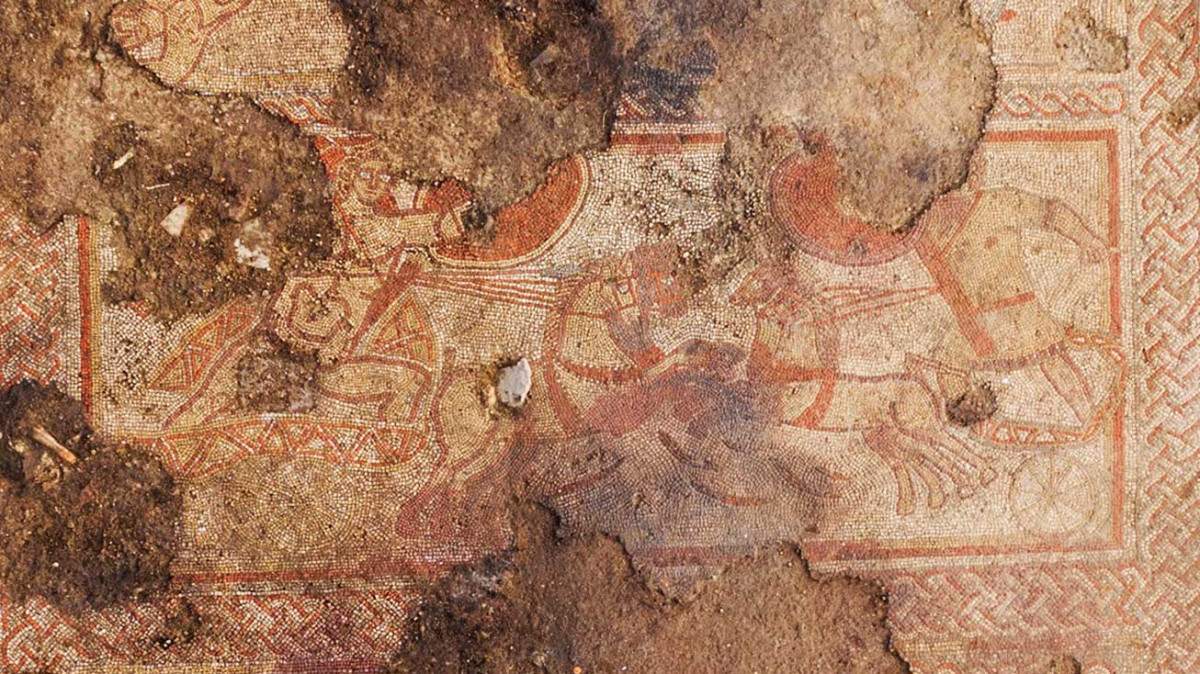
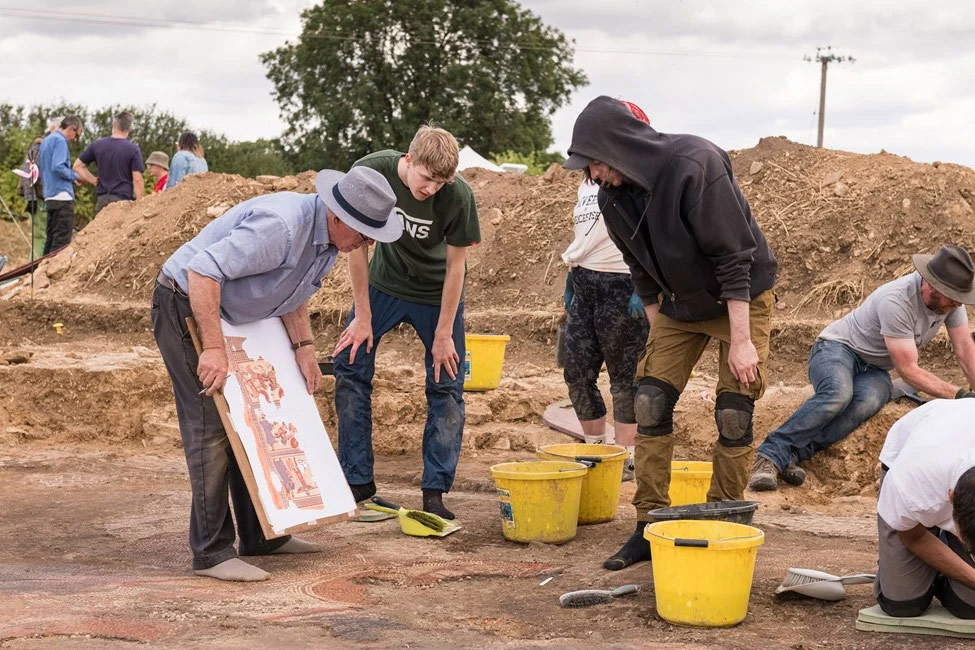
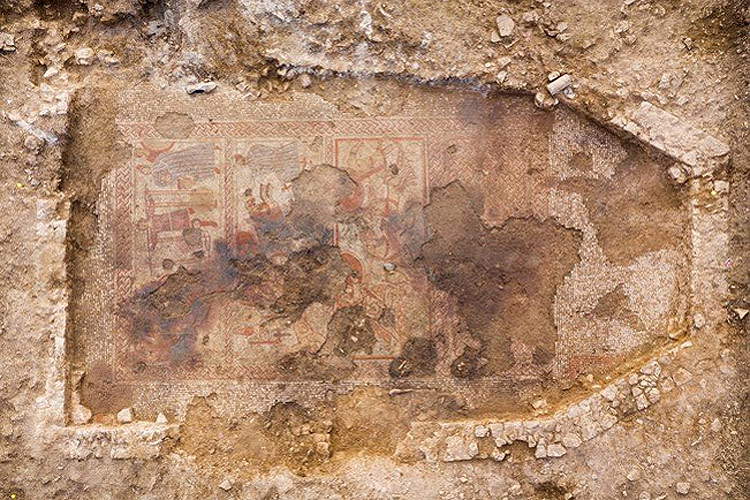
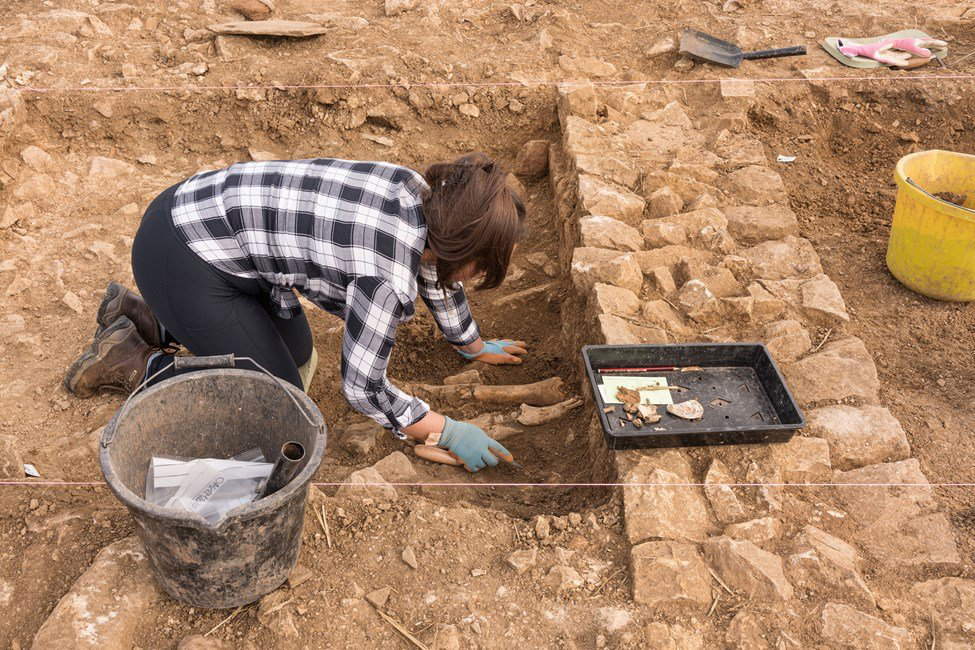 Archaeologist at work on the
Archaeologist at work on the Archaeologist at
Archaeologist at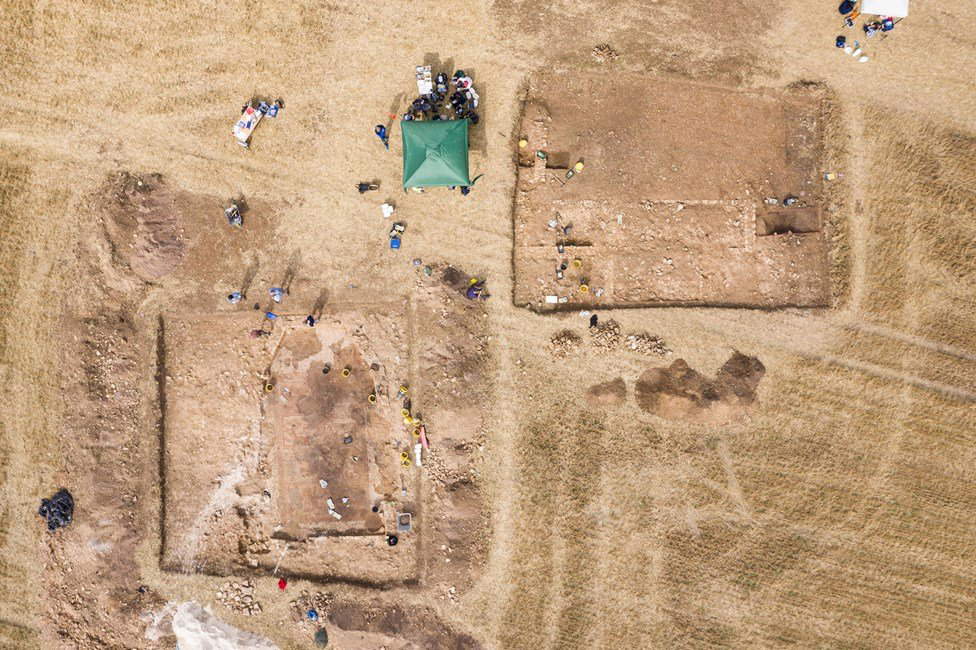
Fire marks and breaks in the mosaic suggest that the site was later reused. Human remains have also been discovered at the site: these burials are thought to have been made after the building was no longer occupied. Although their precise age is currently unknown, they are later than the mosaic but placed in relation to the villa, suggesting a late Roman or early medieval date for the reuse of this structure. Their discovery provides insight into how the site may have been used during this relatively little known early post-Roman historical period. Finds recovered at the site will now be analyzed by Archaeological Services of the University of Leicester and specialists including David Neal, the country’s leading expert on ancient mosaics.
The site has been thoroughly examined and has now been covered over, as is customary, to protect it. The villa complex was found within a field where shallow archaeological remains had been disturbed by plowing and other agricultural activities. Historic England is now working with the landowner to devise agricultural use patterns compatible with the protection of the archaeological remains. In addition, in collaboration with the University of Leicester and other interested parties, Historic England is planning further excavations on the site for 2022. Discussions are underway with Rutland County Council to consider an off-site survey of the villa complex and its finds. The method and scope of this work will be determined by future excavations. The site is located within private land and not accessible to the public, and as yet there is no talk of opening it to visitors. In any case, the discovery of the Rutland villa and footage of the mosaic discovery will be offered to the public in a documentary on BBC Two in early 2022.
“A walk in the fields with the family turned into an incredible discovery,” said Jim Irvine, author of the discovery. “Finding unusual pottery among the grain piqued my interest and spurred further investigative work. Later, looking at satellite images I noticed a very clear mark, as if someone had drawn on my computer screen with a piece of chalk! This was really the ’wow’ moment and the beginning of the story. This archaeological discovery has occupied most of my free time for the past year. Between my regular job and this I have been very busy, and it has been a fascinating journey. The last year has been a real thrill to have been involved and collaborating with archaeologists and students on the site, and I can only imagine what will be unearthed next!”
“It is extraordinary to have discovered such a rare mosaic of this size, as well as a villa around it,” points out Duncan Wilson, ad of Historic England. “Discoveries like this are really important in helping us reconstruct our history. By protecting this site we are able to continue to learn, and we look forward to what future investigations might teach us about the people who lived there over 1,500 years ago.”
 |
| Extraordinary discovery in England: the first mosaic with an episode from the Iliad |
Warning: the translation into English of the original Italian article was created using automatic tools. We undertake to review all articles, but we do not guarantee the total absence of inaccuracies in the translation due to the program. You can find the original by clicking on the ITA button. If you find any mistake,please contact us.




























